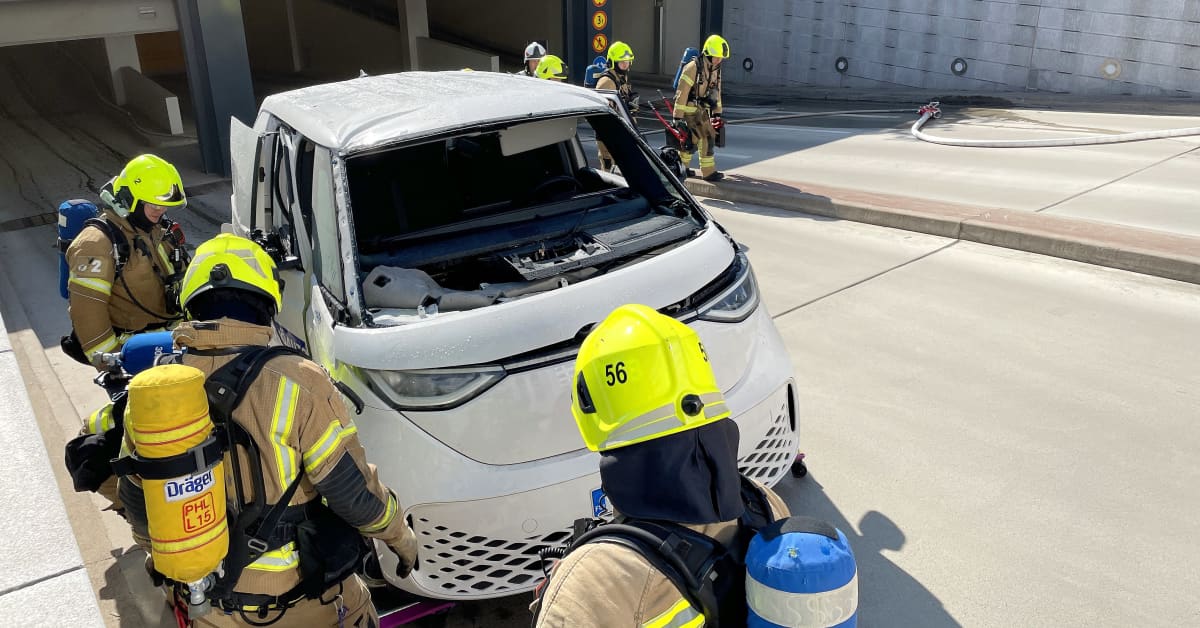Not directly related, but in the news here in Finland today, "electric car exploded while charging in a parking lot"...
VW id.buzz

 yle.fi
yle.fi
Google translation: (hopefully direct link works)

 yle-fi.translate.goog
yle-fi.translate.goog
Picture taken from the article for your convenience:

Anyway. I think it's pretty obvious it was the 12V battery that exploded. Owner has reported he was having 12V issues before the incident. Lead acid batteries tend to generate hydrogen when (over)charged. Apparently VW doesn't detect broken 12V battery properly and keeps trying to charge it, instead of throwing some error? ICE car simply would refuse to start, but on electric car there is a real risk of overcharging/explosion if car keeps trying to charge the 12V battery from main battery.
Now, lithium battery like Ohmmu is actually better in this respect that it doesn't generate hydrogen that could explode. But lithium batteries can have other kind of defects which again can result in fire and smoke. However there is a big difference.. With the original battery in place, you are probably covered by warranty or insurance. With a chinese lithium battery, hmmmmh..
VW id.buzz

Latauksessa ollut sähköauto räjähti Lahden toriparkissa
Auto savutti räjähdyksen jälkeen voimakkaasti. Pelastuslaitos varmisti tilanteen ja hinasi auton pois parkkihallista. Räjähdyksen syy on epäselvä.
Google translation: (hopefully direct link works)

Latauksessa ollut sähköauto räjähti Lahden toriparkissa
Auto savutti räjähdyksen jälkeen voimakkaasti. Pelastuslaitos varmisti tilanteen ja hinasi auton pois parkkihallista. Räjähdyksen syy on epäselvä.
Picture taken from the article for your convenience:
Anyway. I think it's pretty obvious it was the 12V battery that exploded. Owner has reported he was having 12V issues before the incident. Lead acid batteries tend to generate hydrogen when (over)charged. Apparently VW doesn't detect broken 12V battery properly and keeps trying to charge it, instead of throwing some error? ICE car simply would refuse to start, but on electric car there is a real risk of overcharging/explosion if car keeps trying to charge the 12V battery from main battery.
Now, lithium battery like Ohmmu is actually better in this respect that it doesn't generate hydrogen that could explode. But lithium batteries can have other kind of defects which again can result in fire and smoke. However there is a big difference.. With the original battery in place, you are probably covered by warranty or insurance. With a chinese lithium battery, hmmmmh..


